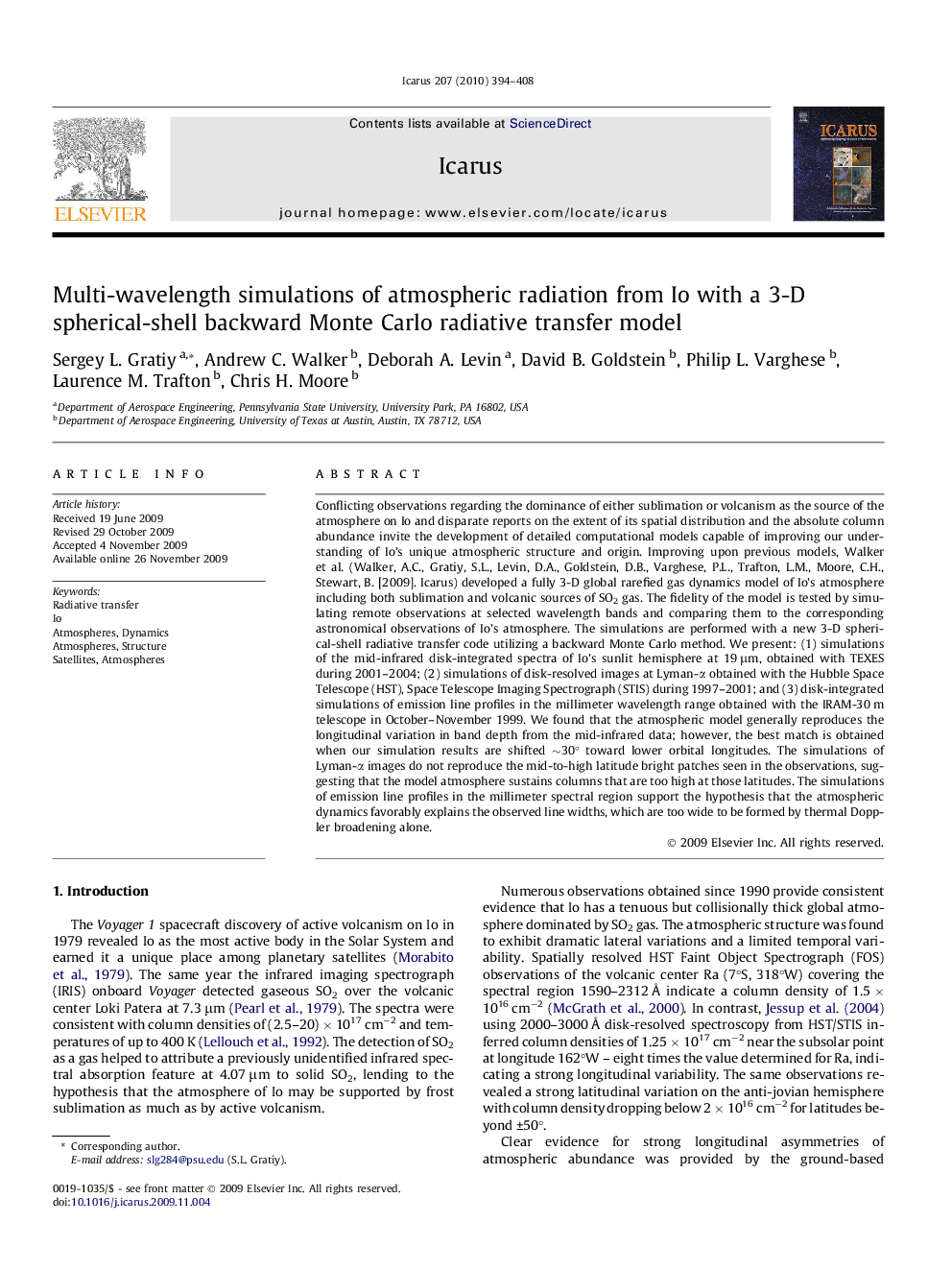| کد مقاله | کد نشریه | سال انتشار | مقاله انگلیسی | نسخه تمام متن |
|---|---|---|---|---|
| 1774498 | 1021166 | 2010 | 15 صفحه PDF | دانلود رایگان |

Conflicting observations regarding the dominance of either sublimation or volcanism as the source of the atmosphere on Io and disparate reports on the extent of its spatial distribution and the absolute column abundance invite the development of detailed computational models capable of improving our understanding of Io’s unique atmospheric structure and origin. Improving upon previous models, Walker et al. (Walker, A.C., Gratiy, S.L., Levin, D.A., Goldstein, D.B., Varghese, P.L., Trafton, L.M., Moore, C.H., Stewart, B. [2009]. Icarus) developed a fully 3-D global rarefied gas dynamics model of Io’s atmosphere including both sublimation and volcanic sources of SO2 gas. The fidelity of the model is tested by simulating remote observations at selected wavelength bands and comparing them to the corresponding astronomical observations of Io’s atmosphere. The simulations are performed with a new 3-D spherical-shell radiative transfer code utilizing a backward Monte Carlo method. We present: (1) simulations of the mid-infrared disk-integrated spectra of Io’s sunlit hemisphere at 19 μm, obtained with TEXES during 2001–2004; (2) simulations of disk-resolved images at Lyman-α obtained with the Hubble Space Telescope (HST), Space Telescope Imaging Spectrograph (STIS) during 1997–2001; and (3) disk-integrated simulations of emission line profiles in the millimeter wavelength range obtained with the IRAM-30 m telescope in October–November 1999. We found that the atmospheric model generally reproduces the longitudinal variation in band depth from the mid-infrared data; however, the best match is obtained when our simulation results are shifted ∼30° toward lower orbital longitudes. The simulations of Lyman-α images do not reproduce the mid-to-high latitude bright patches seen in the observations, suggesting that the model atmosphere sustains columns that are too high at those latitudes. The simulations of emission line profiles in the millimeter spectral region support the hypothesis that the atmospheric dynamics favorably explains the observed line widths, which are too wide to be formed by thermal Doppler broadening alone.
Journal: Icarus - Volume 207, Issue 1, May 2010, Pages 394–408